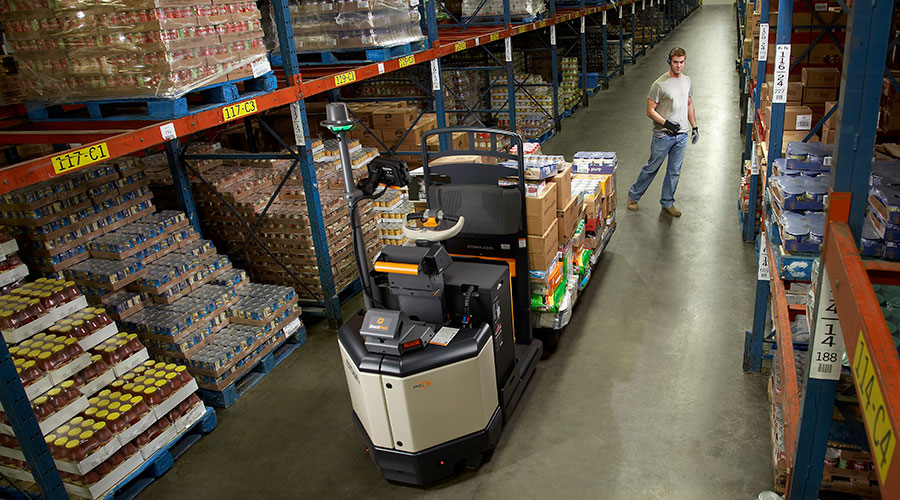Forklift Management Systems Bring Flexibility to Supply Chain

Over the last couple of years, and likely for a few years to come, many companies have learned numerous lessons considering supply chain uncertainty. The importance of planning and implementing processes or procedures, the vital role of retaining and hiring new employees and the inability of forecasting models to anticipate product and parts shortages have all combined to make nearly any supply chain job that much more challenging.
Another important lesson is the precarious balance between supply and demand and the potential danger of having a supply chain that is too lean. While there are benefits to a lean approach, the limitations that could occur such as struggling to react quickly to changing market demands and conditions can be incredibly stressful for employees and catastrophic within operations. Many companies are still struggling to keep their supply chains on track.
Yet, there are a few strategic steps that can be taken to overcome supply chain issues with greater flexibility and agility. When it comes to your material handling equipment needs, the best step you can take is implementing a forklift fleet and operator management system. When utilized effectively, the right system can guide and inform an approach that increases the probability of meeting demand, while helping maintain lean principles and identifying opportunities for increased efficiencies.
Here are two important ways in which a forklift fleet and operator management system can create a more resilient supply chain with greater flexibility and agility.
1. It’s time to really look at the data
The sporadic nature of business can make forecasting and projecting models difficult for most businesses. It can be especially difficult trying to determine the differences between durable demand, new peaks or permanent changes in demand. This makes data more important than ever as you look to gain insight and better understand your operation and keep pace with customer demands and expectations.
Given the prominent role that lift trucks play in the supply chain, there is actually a wealth of data available through forklift fleet and operator management systems that can provide insight into supply chain operations. This includes data on operator performance, product movement and how, when and where your forklift fleet is being used. Knowing the performance of your fleet and operators is especially critical as you deal with demand fluctuations, supply chain disruptions and evolving forecast models.
Capturing the data is just the first step. Planning is paramount towards instituting accountability and action within your facility. Ultimately, success can depend on the processes, resources and support (internal and external) available within facilities, and the commitment to make decisions and act based on what the data reveals. Consulting with your provider to understand what information can be gathered, analyzing what data is significant and how you can best act on it can be quite valuable in helping to thwart supply chain uncertainties and issues.
2. A diverse fleet is an effective fleet
Another way an effective forklift fleet and operator management system can help you better prepare operations for unexpected shortages and delays, as well as shifting customer expectations, is helping you determine the right mix of lift trucks for your operations and objectives. While ensuring your fleet is being utilized by the right operators, at the right times, in the right locations is important, it is equally important that you deploy the right equipment and technology for each task to effectively and efficiently get your products out the door.
For example, as retail and grocery companies are challenged to move as much product as possible, as quickly as possible, they are also being pressured to maintain facility footprints by building up and not out to increase storage density within existing space. To go higher in the warehouse, you need a forklift that can optimize warehouse slotting by placing heavier loads at higher heights with faster speeds, while also maintaining safety standards with greater operator control and visibility.
Additionally, as operations seek ways to quickly accelerate productivity to meet fast-changing customer demand, interest in automation continues to grow. One flexible automation solution gaining attention is dual-mode technology that enables forklifts to switch between manual and automated operations, depending on the needs of the facility. This enables warehouses to take an incremental approach to deploying automation with minimal changes to infrastructure.
The data gathered from your forklift fleet and operator management system can help you identify tasks and equipment that are ideal for automation and develop a clear path for tangible ROI. Having the right data enables you to strategically grow and evolve your automation efforts, adding diversity and flexibility to your operations.
There has never been a time of more uncertainty and unpredictable changes within the supply chain. Unprecedented demands and changes in consumer behavior are forcing many companies to rethink their operations and succinctly plan for the unexpected. Implementing a forklift fleet and operator management system and acting on the data it gathers can make powerful progress toward building and maintaining more flexibility and agility into your supply chain.